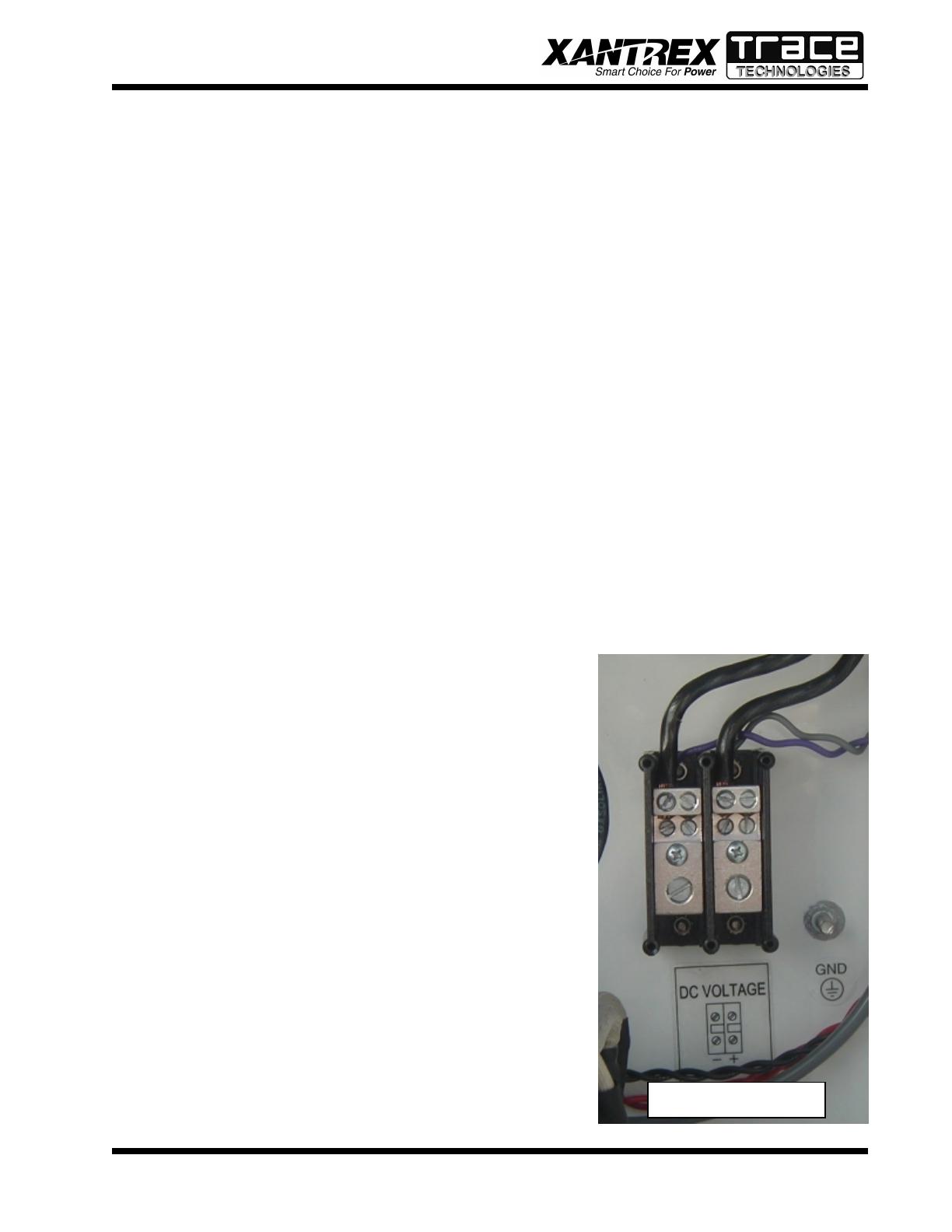
SECTION 3
INSTALLATION AND INITIAL TURN-ON
PV-15208 Photovoltaic Inverter
Operation and Maintenance Manual
Copyright 2000, Xantrex Technologies Inc./Trace Technologies Corp.
DOCUMENT: 150919
3-6
• Verify the PV+, PV-, PV neutral (if array is bipolar), and PV
safety ground are isolated from each other. The PV safety
ground should be bonded to the enclosure ground stud. Re-
fer to system schematic in Section 7.
• Verify all PV fuses are installed (if present).
• Verify PV string diodes are wired properly (if present).
• Verify proper PV voltage polarity at the PV string disconnect/
combiner boxes.
Initial Power
• Close the isolation transformer circuit breaker.
• Verify 208 VAC voltage across the AC disconnect.
• Close the AC disconnect (if present).
• With the DC disconnect switch opened (if present), close one
of the PV array string disconnect devices.
• Carefully measure VDC at the PV disconnect switch. The
value should be the same as at the PV array string disconnect
device. It should also be positive.
• Close the PV disconnect switch (if present).
• Carefully measure VDC across TB1-1 and TB1-2 (PV +/-)
terminal block. The value should be the same as at the PV
INITIAL TURN ON PROCEDURE
The following procedures are intended to verify correct installation and proper operation of the PV-
15208. These steps are to be followed sequentially. Do not continue if any of the steps or results are
unclear. Refer to Section 4 for a detailed description of system operation. Refer to Section 5 for fault
condition descriptions and troubleshooting. Refer to Section 7 for detailed system schematics.
Visual Inspection, Isolation Transformer
• Verify the isolation transformer circuit breaker is open.
• Remove the isolation transformer access panel.
• If the inverter side of the isolation transformer is configured WYE, the neutral must be left floating.
The transformer neutral must not be connected to the utility side neutral, the transformer chassis, or
ground.
• Verify the inverter 208 VAC conductors are connected to the isolation transformer.
• Verify the utility conductors are properly connected to the isolation transformer.
Visual Inspection, PV-15208
• Insure AC and DC disconnect are opened (if present).
• Insure PV array string disconnect switches are opened (if present).
• Open the door of the enclosure, and inspect.
• Verify all wire connections are tight.
• Inspect the cables between the terminal blocks and the matrix driver board. All wire harnesses
should be snap-locked into their respective PCB headers.
Visual Inspection, PV Array Wiring
DC TERMINAL






























